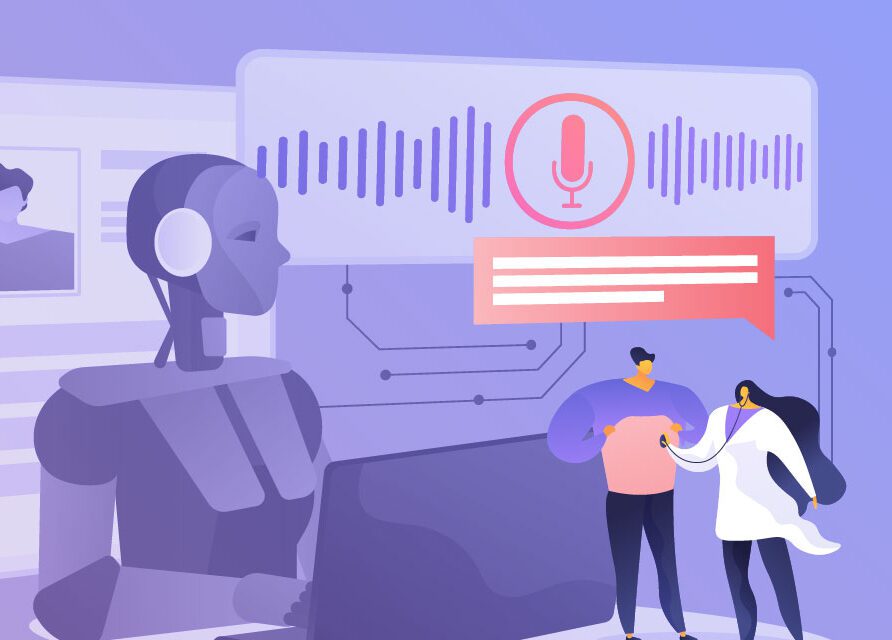Article
Working smarter: Virtual medical assistants on the up and up
The healthcare industry is buzzing about AI, especially its ability to automate time-consuming, tedious work. Given that physicians spend about one-third of their working hours in the EHR and on administrative tasks, it’s certainly worth the pursuit. AI development is moving at an incredibly rapid pace, and its next evolution in healthcare is closer than you might think.
The promise of AI isn’t just about speed—it’s about restoring meaning and connection in the clinical encounter. In my work supporting ambulatory practices, I’ve seen how even the most capable providers are stretched thin by administrative overhead.
One of the most promising developments on the horizon is the rise of virtual medical assistants (VMAs). These AI-powered tools will not just save providers’ time, they will shift health IT systems from sources of friction to true assets. This paves the way to smoother, more impactful patient–provider interactions.
So, let’s dive into what this not-so-distant future looks like.
The promise of AI isn’t just about speed—it’s about restoring meaning and connection in the clinical encounter.
Alleviating burden
Currently, just to understand a patient’s full history, providers often must click through multiple electronic health record (EHR) tabs. That can take several minutes of manual searching, all of which detract from facetime with the patient.
Here come VMAs, integrated with the EHR, to change this dynamic entirely. But the benefits go beyond static chart summarization. This technology is about answering the exact clinical questions a provider has in the moment like, “Has this patient ever been on a statin, and if so, why was it stopped?” or “Show me any missed follow-up on abnormal mammogram results.” These tailored prompts help clinicians cut through chart clutter and surface the insights most relevant to what they’re seeing—and deciding—right now. No coding knowledge required.
Additionally, we’re already seeing how AI can help clinicians focus more on direct patient care with ambient listening tools today. Solutions like TouchWorks Note+ generate notes based on clinical encounters that providers can easily review before completion, without all that manual data entry. Integrating VMAs with ambient listening AI will provide a level of assistance my peers back in medical school could only have dreamed of. By “listening” to patient-provider conversations in real time, VMAs will anticipate and take proactive steps to fulfill providers’ needs.
Standards of care maintained
Due to the adaptability of VMAs, they will provide the kind of customization and personalization we take for granted in our personal lives across ecommerce, banking and other consumer-minded industries.
By leveraging VMAs, practices could define templates for the most common chronic conditions among their patient populations to surface key metrics any time a provider opens the record of a patient with that condition. With this type of condition-specific review baked in, the provider would get easy visibility into the most relevant datapoints or trends without needing to prompt the system to provide those insights.
Additionally, practices will be able to set their own standards of care for managing conditions, adding initial diagnostic criteria and all the management rules into the VMA’s logic. As a result, the VMA would help evaluate whether a patient’s current management aligns with the standard of care as defined by the practice. For instance, a practice could set a target A1C threshold for patients with diabetes, prompting the VMA to flag any patients who haven’t met the goal or received recommended follow-up—making it easier for clinicians to stay aligned with protocols. Clinical decisions must remain in the hands of trained professionals; AI can enhance judgment, not replace it.

Focusing where it matters
Virtual medical assistants represent a major leap forward in how AI supports care delivery. They will enable clinicians to spend more time focused on patients and less time wrestling with technology. By removing distractions and anticipating needs, they have the power to make care more efficient, more personalized and ultimately, more human.
At Altera, we’re embedding these innovations into TouchWorks® EHR to help clinicians spend more time with patients and less time navigating systems. Discover how TouchWorks EHR is enabling practices to provide the experiences and outcomes patients and providers want here.












